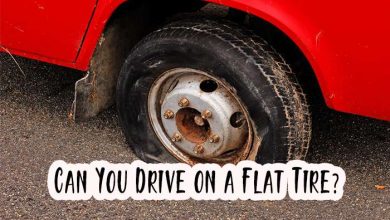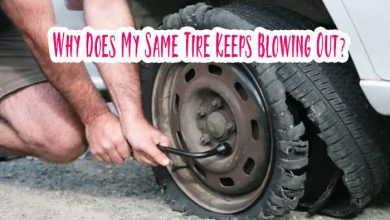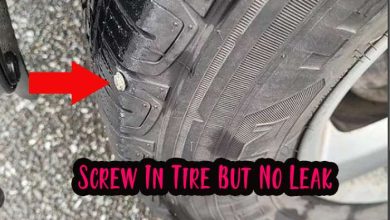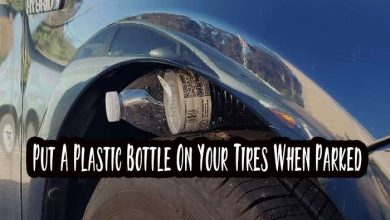Are Tire Plugs Safe? A Comprehensive Guide to Tire Plug Safety
Tire punctures can happen anytime, and they’re always inconvenient. Whether you run over a nail in the middle of nowhere or encounter a sharp object on a busy highway, understanding how to address the situation is vital.
Tire plugs are a popular solution for repairing punctures quickly, but their safety concerns many drivers.
In this comprehensive guide, I will delve into the world of tire punctures and plugs, discussing their pros and cons and safety considerations and providing a step-by-step guide on using them effectively. Read my recent post- Can a Plugged Tire Blowout?
Tire plugs are not considered to be as safe as tire patches. They are a temporary fix that can be used to get you back on the road in a pinch, but they should not be considered a permanent solution.
Understanding Tire Punctures
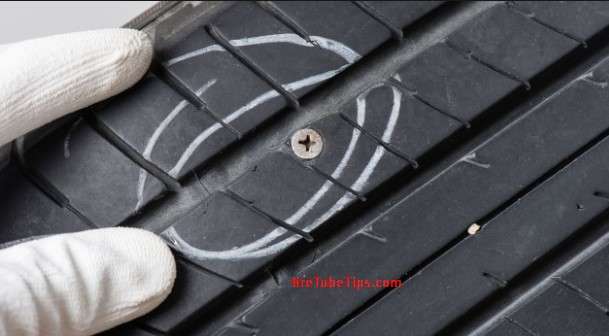
A tire puncture occurs when a foreign object, such as a nail, screw, or glass, pierces the tire’s rubber surface. This breach leads to a gradual loss of air pressure, eventually causing the tire to go flat.
Tire punctures can be categorized into two types: minor and major. Minor punctures typically involve small objects and result in slow air loss.
Major punctures, on the other hand, involve larger objects or more severe damage, leading to rapid deflation.
The Basics of Tire Plugs
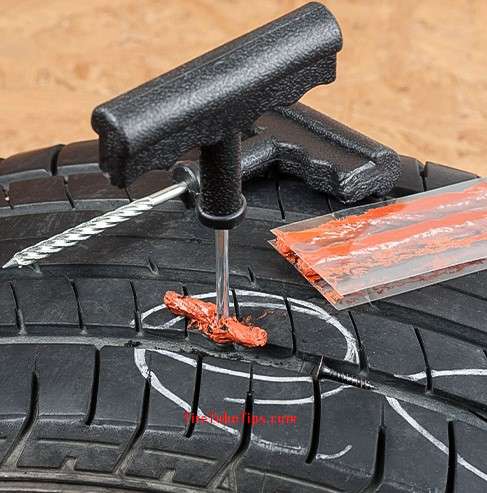
Tire plugs are simple yet effective devices used to repair minor punctures quickly and get you back on the road. They consist of a rubber plug attached to a handle.
The plug seals the hole and prevents further air loss when inserted into the puncture site. One of the key benefits of tire plugs is their ease of use. You don’t need to be a mechanic to use them effectively.
However, it’s important to note that tire plugs are primarily designed for temporary repairs. They will get you to a professional tire shop for a permanent fix.
Pros and Cons of Tire Plugs
Pros:
- Cost-Effective: Tire plugs are affordable for minor punctures, saving you money on expensive tire replacements.
- Quick Fix: They provide a rapid and temporary solution, allowing you to continue your journey without too much delay.
- User-Friendly: You don’t need advanced mechanical skills to use tire plugs. Anyone can learn how to use them effectively.
- Readily Available: You can purchase tire plug kits at most automotive stores, making them easily accessible.
Cons:
- Temporary Solution: Tire plugs are not a permanent fix for punctures. They are intended to get you to a tire repair shop.
- Limited Use: They are suitable for minor punctures but may not work for major or sidewall damage.
- Safety Concerns: The effectiveness and safety of tire plugs have raised questions among drivers.
Safety Considerations
Before deciding whether tire plugs are safe for your situation, let’s talk safety.
- Inflation Pressure: It’s crucial to ensure that your tire’s inflation pressure is within the recommended range after using a plug. Underinflated tires can lead to accidents.
- Speed Limit: Tires with plugs might have speed limitations. Always check the manufacturer’s recommendations.
- Regular Inspection: It’s essential to inspect your plugged tire periodically for any signs of damage or leakage.
- Professional Advice: When in doubt, consult a tire professional for advice on the safety of using a plug in your specific situation.
Are Tire Plugs Safe?
Are Tire Plugs Safe? Tire plugs are generally considered to be safe for temporary repairs, but they are not considered to be as safe as a patch repair. This is because a plug repair does not completely seal the puncture hole, and it can allow moisture and air to penetrate into the tire body. Over time, this can lead to corrosion of the steel belts and other internal components, which can increase the risk of a blowout.
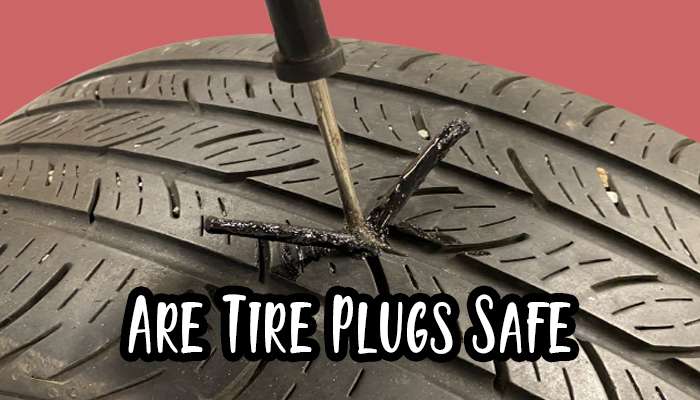
The following are some of the risks associated with tire plugs:
- Moisture and air can penetrate the tire body, causing corrosion and weakening of the steel belts. This can lead to a blowout, especially if the tire is subjected to high speeds or heavy loads.
- The plug itself can loosen or come out completely, causing the tire to go flat.
- The plug repair can create a weak spot in the tire, which can make it more likely to develop a bulge or rupture.
It is important to note that not all tire plugs are created equal. Some plugs are made from better materials and are installed more carefully than others. However, even a well-installed plug repair is not as safe as a patch repair.
Expert opinions:
The American Society of Testing and Materials (ASTM) has conducted extensive testing on tire plugs and has found that they can be a safe and effective way to repair punctures in certain cases.
However, ASTM also recommends that plugs should only be used as a temporary repair and that the tire should be replaced as soon as possible.
The Tire Industry Association (TIA) also recommends using plugs only for temporary repairs. TIA states that plugs are not suitable for repairing punctures in the tire’s sidewall or for repairing punctures larger than 1/4 inch in diameter.
Step-by-Step Guide to Using Tire Plugs
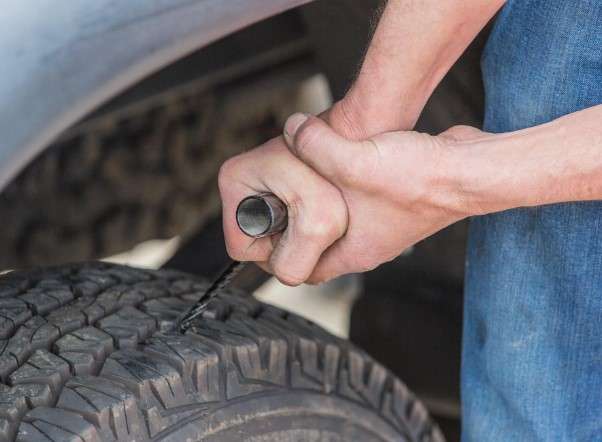
If you’ve decided that using a tire plug is the right choice for your situation, here’s a step-by-step guide to help you through the process.
Remember, always follow the manufacturer’s instructions provided with your plug kit.
Step 1: Prepare Your Tools
Gather the plug kit, which typically includes the plug itself, the insertion tool, and the adhesive.
Step 2: Locate the Puncture
Find the puncture by inspecting the tire carefully. Remove any debris from the puncture site.
Step 3: Insert the Plug
Use the insertion tool to push the plug into the puncture. Be sure to push it all the way in.
Step 4: Trim Excess Plug
Trim any excess plug material flush with the tire’s tread.
Step 5: Check for Leaks
Inflate the tire to the recommended pressure and apply soapy water to the plug area. If you see bubbles, it indicates a leak. In that case, the plug did not seal properly.
Step 6: Monitor and Maintain
Keep an eye on the plugged tire. Check the inflation pressure regularly and look for signs of damage or leakage.
Read Also: Are Pirelli Scorpion Zero Tires Good in Snow?
Limitations of Tire Plugs
While tire plugs are a valuable tool for addressing minor punctures, they have limitations that you should be aware of:
- Not for Sidewall Damage: Tire plugs should not be used to repair punctures in the sidewall or shoulder of the tire. These areas are more prone to failure and pose a safety risk.
- Temporary Solution: Tire plugs are intended as a temporary fix to get you to a tire shop. They are not a permanent solution.
- Size of Puncture: Tire plugs are most effective for small punctures caused by nails or screws. A plug may not effectively seal larger punctures.
- Professional Inspection: Even if you use a tire plug, it’s essential to have a professional tire technician inspect the tire to determine if further repairs or replacements are needed.
Frequently Asked Questions
How long can a tire last with a plug?
The longevity of a tire with a plug depends on various factors, including the puncture’s size and location and the plug’s quality and installation. In general, a properly installed plug can last for thousands of miles. Still, it’s crucial to consider it a temporary solution and have the tire professionally repaired or replaced as soon as possible.
Can a tire plug be used on a sidewall puncture?
No, using a tire plug on a sidewall puncture is unsafe. Sidewall punctures are particularly dangerous as they can lead to sudden and catastrophic tire failure. In such cases, the tire should be replaced rather than repaired with a plug.
Are tire plugs suitable for run-flat tires?
Tire plugs are generally not recommended for run-flat tires. Run-flat tires are designed to be driven for a short distance even after a puncture, and using a plug may compromise their structural integrity. It’s best to consult the manufacturer’s guidelines or a tire professional for run-flat tire repairs.
Is it safe to use a tire plug on a high-performance tire?
Using a tire plug on a high-performance tire is generally safe for minor punctures in the tread area. However, it’s crucial to follow proper installation procedures and have the tire inspected by a professional as soon as possible.
Do tire plugs affect tire balance?
When installed correctly, tire plugs should not significantly affect tire balance. However, if the plug is not inserted correctly or if there are other underlying issues with the tire, it may lead to balance problems. It’s advisable to have the tire inspected by a professional if you notice any unusual handling or vibrations after using a plug.
Conclusion
Tire plugs can be a safe and effective solution for repairing minor punctures in the tread area of your tire, provided they are used correctly.
However, it’s essential to understand their limitations and consider them a temporary fix to get you to a tire shop for a proper repair or replacement. When in doubt or dealing with more severe tire damage, it’s always best to consult a professional tire technician for guidance.
Safe driving starts with well-maintained tires, so stay informed and prepared for any unexpected punctures on the road.
Glossary
- Tread Area: The part of the tire that comes into direct contact with the road surface.
- Sidewall: The vertical portion of the tire that connects the tread area to the rim.
- Shoulder: The area where the tread meets the sidewall of the tire.
- Tire Technician: A professional trained in inspecting, repairing, and replacing tires.
